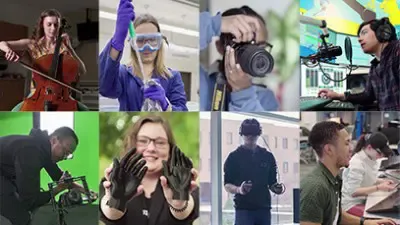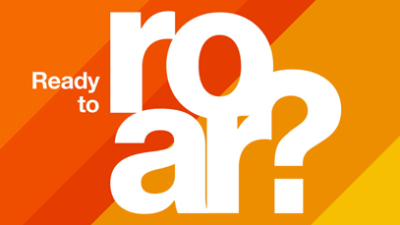Astrophysical Sciences and Technology Doctor of Philosophy (Ph.D.) Degree
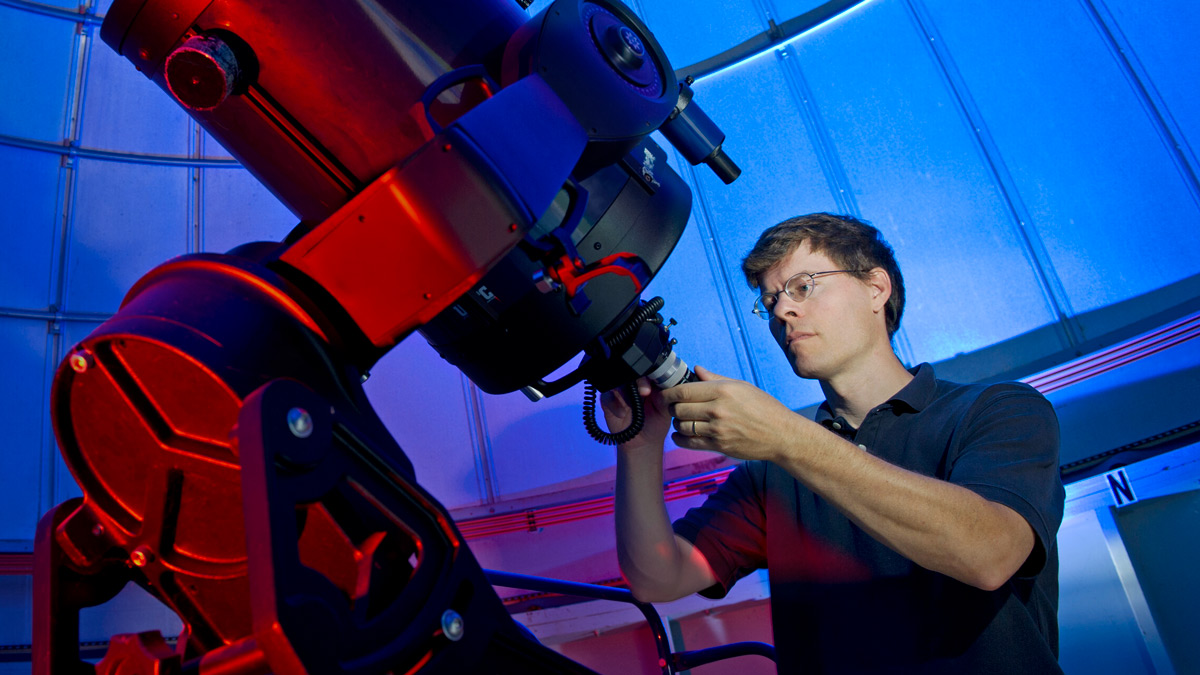
Astrophysical Sciences and Technology
Doctor of Philosophy (Ph.D.) Degree
- RIT /
- Rochester Institute of Technology /
- Academics /
- Astrophysical Sciences and Technology Ph.D.
An astrophysics Ph.D. centered on phenomena beyond the Earth and on the development of the technologies that will enable the next major strides in the field.
Overview for Astrophysical Sciences and Technology Ph.D.
Why Study Astrophysical Sciences at RIT
STEM-OPT Visa Eligible: The STEM Optional Practical Training (OPT) program allows full-time, on-campus international students on an F-1 student visa to stay and work in the U.S. for up to three years after graduation.
Unique Interdisciplinary Approach: This multidisciplinary program is administered by the School of Physics and Astronomy, in collaboration with the School of Mathematics and Statistics and the Chester F. Carlson Center for Imaging Science, setting it apart from conventional astrophysics graduate programs at traditional research universities.
Tailored to your Interests: The program offers tracks in astrophysics (including observational and theoretical astrophysics), computational and gravitational astrophysics (including numerical relativity, gravitational wave astronomy), and astronomical technology (including detector and instrumentation research and development).
Participate in Research: Students may participate in one of three research centers associated with the School of Physics and Astronomy: the Center for Computational Relativity and Gravitation, the Center for Detectors or the Laboratory for Multi-wavelength Astrophysics.
Industry Opportunities: Graduates of the program have secured roles at the Dudley Observatory at the Museum of Innovation & Science, the National Radio Astronomy Observatory, in higher education institutions, among others.
There has never been a more exciting time to study the universe beyond the confines of the Earth. A new generation of advanced ground-based and space-borne telescopes and enormous increases in computing power are enabling a golden age of astrophysics. The doctoral program in astrophysical sciences and technology focuses on the underlying physics of phenomena beyond the Earth and on the development of the technologies, instruments, data analysis, and modeling techniques that will enable the next major strides in the field. The program's multidisciplinary emphasis sets it apart from conventional astrophysics graduate programs at traditional research universities.
The program offers tracks in astrophysics (including observational and theoretical astrophysics), computational and gravitational astrophysics (including numerical relativity, gravitational wave astronomy), and astronomical technology (including detector and instrumentation research and development). Students can pursue research interests in a wide range of topics, including design and development of novel detectors, multiwavelength studies of proto-stars, active galactic nuclei and galaxy clusters, gravitational wave data analysis, and theoretical and computational modeling of astrophysical systems including galaxies and compact objects such as binary black holes. Depending on research interests, students may participate in one of three research centers: the Center for Computational Relativity and Gravitation (Video), the Center for Detectors, or the Laboratory for Multi-wavelength Astrophysics.
Plan of Study
In the astrophysics Ph.D., students complete a minimum of 60 credit hours of study, consisting of at least 24 credit hours of course work and at least 24 credit hours of research. Students may choose to follow one of three tracks: astrophysics, astroinformatics and computational astrophysics (with the option of a concentration in general relativity), or astronomical instrumentation. All students must complete four core courses with grades of B or better, as well as two semesters of a graduate seminar. Core course grades below B must be remediated by taking and passing a comprehensive exam on the core course subject matter prior to receiving the doctoral degree. The remaining course credits are made up from specialty track courses and electives. Students must pass a qualifying examination, which consists of completing and defending a master's-level research project, prior to embarking on the dissertation research project.
Electives
Electives include additional courses in astrophysics and a wide selection of courses offered in other RIT graduate programs (e.g., imaging science, computer science, engineering), including detector development, digital image processing, computational techniques, optics, and entrepreneurship, among others.
Ph.D. qualification requirements: Master's-level research project
During the first year of the program, most doctoral candidates begin a master's-level research project under the guidance of a faculty member. The project gains momentum during the second year after the core courses have been completed. The master's-level research topic may be different from the eventual doctoral dissertation topic, and the supervising faculty member will not necessarily serve as the dissertation research advisor.
The doctoral qualification requirements consist of a combination of a publication-quality master's-level project report, which may be in the form of a thesis (if the student so chooses) and an oral presentation and defense of the master's-level project. This qualification process, which must be completed by the beginning of the third year of full-time study or its equivalent, is designed to ensure the student has the necessary background knowledge and intellectual skills to carry out doctoral-level research in the subject areas of astrophysical sciences and technology. A director-approved committee consisting of the student's master's-level project research advisor and two additional faculty members will assess the student's project report and defense.
Dissertation research advisor
After passing the qualifying examination, students are guided by a dissertation research advisor who is approved by the program director. The choice of advisor is based on the student's research interests, faculty research interests, and available research funding.
Research committee
After passing the qualifying examination, a dissertation committee is appointed for the duration of the student's tenure in the program. The committee chair is appointed by the dean of graduate education and must be a faculty member in a program other than astrophysical sciences and technology. The committee chair acts as the institutional representative in the final dissertation examination. The committee comprises at least four members and in addition to the chair, must also include the student's dissertation research advisor and at least one other member of the program's faculty. The fourth member may be an RIT faculty member, a professional affiliated in industry, or a representative from another institution. The program director must approve committee members who are not RIT faculty.
Ph.D. proposal review (candidacy exam)
Within six months of the appointment of the dissertation committee, students must prepare a Ph.D. research project proposal and present it to the committee for review. The student provides a written research proposal and gives an oral presentation to the committee, who provides constructive feedback on the project plan. The review must take place at least six months prior to the dissertation defense.
Annual review
Each fall, students provide an annual report in the form of an oral presentation, which summarizes progress made during the preceding year. The program director also monitors student's progress toward meeting the requirements for either the qualifying examination (during the first two years), or the Ph.D. (after passing the qualifying examination). Students may be interviewed, as necessary, to explore any concerns that emerge during the review and to discuss remedial actions.
Final examination of the dissertation
Once the dissertation is written, distributed to the dissertation committee, and the committee agrees to administer the final examination, the doctoral candidate may schedule the final examination. The candidate must distribute a copy of the dissertation to the committee and make the dissertation available to interested faculty at least four weeks prior to the dissertation defense.
The final examination of the dissertation is open to the public and is primarily a defense of the dissertation research. The examination consists of an oral presentation by the student, followed by questions from the audience. The dissertation committee privately questions the candidate following the presentation. The dissertation committee caucuses immediately following the examination and thereafter notifies the candidate and the program director of the results.
Residency
All students in the program must spend at least one year (summer term excluded) in residence as full-time students to be eligible to receive the doctorate degree.
Time Limitations
All doctoral candidates must maintain continuous enrollment during the research phase of the program. Normally, full-time students complete the course of study in approximately four to five years. A total of seven years is allowed to complete the requirements after first attempting the qualifying examination.
-
Meet us on-campus on February 19
Learn about the programs that interest you. Hear from program faculty, speak with current graduate students, and ask the questions that will help you get one step closer to your career goals.
Research
The astrophysical sciences and technology program offers students a wide range of research opportunities spanning observational and theoretical astrophysics, computational astrophysics, general relativity and gravitational wave astronomy, and the design and development of advanced detectors and instrumentation for astronomy. RIT hosts a vibrant astronomy and astrophysics research community of more than 60 faculty, post-docs, research fellows, and graduate students who participate in three designated research centers:
- The Center for Computational Relativity and Gravitation
- The Center for Detectors
- Laboratory for Multiwavelength Astrophysics
Faculty and students frequently obtain data from space observatories including the Hubble Space Telescope, the Spitzer Space Telescope, the Chandra X-ray Observatory, the Herschel Space Observatory, and various ground-based observatories such as the Gemini Observatory, twin 8.1-meter diameter optical/infrared telescopes located in Hawaii and Chile, the W. M. Keck Observatory on Hawaii, and the Very Large Array radio telescope facility in New Mexico. RIT is a member of the LIGO Scientific Collaboration, which analyzes the data taken by the Laser Interferometer Gravitational-Wave Observatory, and a member of the Legacy Survey of Space Time Corporation, which will operate an 8.4 m telescope at the Vera C. Rubin Observatory in Chile, to conduct a 10-year survey of the Southern skies.
Computing facilities include the GravitySimulator supercomputer, dedicated to N-body simulations of galactic nuclei and stellar clusters and the NewHorizons computer cluster, for numerical relativity and relativistic hydrodynamics simulations. Funding has recently been obtained to acquire an even more powerful 600-core cluster (BlueSky). Researchers at RIT's Center for Computational Relativity and Gravitation also have access to national supercomputing facilities, such as the Blue Waters supercomputer at the National Center for Supercomputing Applications at the University of Illinois at Urbana-Champaign.
RIT’s Center for Detectors operates extensive research laboratory facilities:
- Rochester Imaging Detector Laboratory
- Lobozzo Photonics Lab,
- Integrated Photonics Lab,
- Experimental Cosmology Lab,
- Suborbital Astrophysics Lab,
- Laboratory for Advanced Instrumentation Research,
- Expitaxially-Integrated Nanoscale Systems Lab,
- Quantum Imaging and Information Lab, and the
- Electrical and Optical Characterization Lab.
The Center also has access to state-of-the-art simulation software, and machining and electronic assembly facilities, such as the Semiconductor & Microsystems Fabrication Lab and the Center for Electronics Manufacturing and Assembly.
Faculty involved in the astrophysical sciences and technology program regularly attract substantial external research funding from national and state agencies, including funding support from NASA, National Science Foundation, NYSTAR (Empire State Development Division of Science, Technology, and Innovation), amounting to over $12 million in the last four years.
Current research interests include:
- Strong-field gravitational dynamics of interacting compact objects such as black holes and neutron stars
- Magnetohydrodynamical simulations of the accretion disks and other astrophysical environments around supermassive black-holes
- Detection of gravitational wave signatures of binary black holes and/or neutron stars in close binary orbits
- Single Photon Counting Detectors for NASA Astronomy Missions
- New Infrared Detectors for Astrophysics
- Microgrid polarizer arrays
- Young stars and proto-planetary disks
- Chandra Planetary Nebula Survey
- Feeding and Feedback in Active Galactic Nebulae (AGN)
- AGN feedback in galaxy clusters
- Supermassive black holes in low redshift elliptical galaxies
- Reverberation mapping the circum-nuclear torus in AGN
- Stellar dynamics and supermassive black holes in galactic nuclei
- Hydrodynamical signatures of dark-matter dominated satellite galaxies
Featured Work and Profiles
-
Exploring the Potential of Virtual Reality for Analyzing Astronomical Data
Ryan Butler, a Ph.D. candidate in the Astrophysical Science and Technology program at RIT, is exploring the use of virtual reality to analyze astronomical data.
Read More about Exploring the Potential of Virtual Reality for Analyzing Astronomical Data -
Unfolding the Universe
RIT astrophysicist, Jeyhan Kartaltepe, puts students first while researching the origins of thousands of galaxies.
Read More about Unfolding the Universe -
Navigating Research Policy with Senior Research Officers
Kevin Cooke ’19 found his calling at the intersection of science and policy while pursuing his Ph.D. at RIT. Now, he’s the Director of Research Policy at APLU.
Read More about Navigating Research Policy with Senior Research Officers -
Astrophysics Ph.D. Research: How Galaxies Form and Evolve
Brittany Vanderhoof (astrophysical sciences and technology) Ph.D. student Brittany Vanderhoof chose RIT for the diverse range of research and accessibility of professors. Now she’s growing as an astrophysicist and researching how galaxies form and evolve.
Read More about Astrophysics Ph.D. Research: How Galaxies Form and Evolve -
AST Program Grad is now Researching Stars at the Smithsonian
RIT Astrophysical Sciences and Technology Ph.D. graduate Rodolfo (Rudy) Montez Jr. ’10 is now an Astrophysicist researching stars at the Center for Astrophysics | Harvard & Smithsonian.
Read More about AST Program Grad is now Researching Stars at the Smithsonian
Related News
-
December 4, 2025
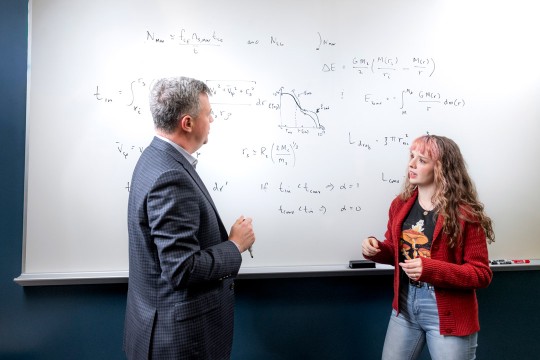
RIT ‘star hunters’ use AI to uncover rare clues about the life and death of celestial bodies
RIT astrophysicist Jason Nordhaus is using AI and machine learning to hunt for star systems that will help us understand how stars live, die, and create gravitational waves.
-
October 29, 2025

RIT research reveals new details in the Red Spider Nebula
The Red Spider Nebula, named for its distinct shape, can now be seen clearer than ever thanks to work by RIT scientists.
-
August 20, 2025
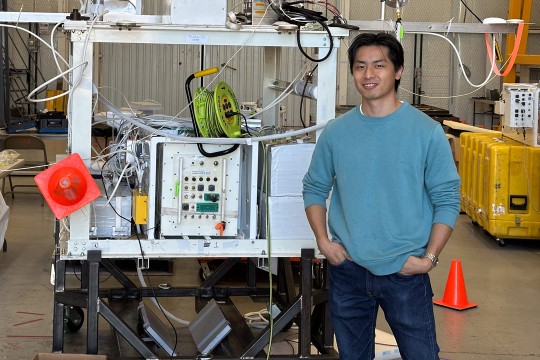
Student-led NASA project takes flight on balloon mission
A years-long student-led NASA project that develops technology to help guide rockets will near its final destination this month on board the Balloon Optimization Opportunity Platform!, or BOOP!
Curriculum for 2025-2026 for Astrophysical Sciences and Technology Ph.D.
Current Students: See Curriculum Requirements
Students are also interested in
Admissions and Financial Aid
This program is available on-campus only.
| Offered | Admit Term(s) | Application Deadline | STEM Designated |
|---|---|---|---|
| Full‑time | Fall | January 15 priority deadline, rolling thereafter | Yes |
Full-time study is 9+ semester credit hours. International students requiring a visa to study at the RIT Rochester campus must study full‑time.
Application Details
To be considered for admission to the Astrophysical Sciences and Technology Ph.D. program, candidates must fulfill the following requirements:
- Learn tips to apply for a doctoral program and then complete a graduate application.
- Submit copies of official transcript(s) (in English) of all previously completed undergraduate and graduate course work, including any transfer credit earned.
- Hold a baccalaureate degree (or US equivalent) from an accredited university or college. A minimum cumulative GPA of 3.0 (or equivalent) is recommended.
- Submit a current resume or curriculum vitae.
- Submit a statement of purpose for research which will allow the Admissions Committee to learn the most about you as a prospective researcher.
- Submit two letters of recommendation.
- Entrance exam requirements: None
- Submit English language test scores (TOEFL, IELTS, PTE Academic, etc.), if required. Details are below.
English Language Test Scores
International applicants whose native language is not English must submit one of the following official English language test scores. Some international applicants may be considered for an English test requirement waiver.
Duolingo (DET): 120
IELTS: 6.5
LanguageCert Academic: 70
PTE Academic: 56
TOEFL: 79
International students below the minimum requirement may be considered for conditional admission. Deaf and hard-of-hearing test takers with significant hearing loss do not need to take the listening and speaking sections for the TOEFL and IELTS. Each program requires balanced sub-scores when determining an applicant’s need for additional English language courses.
How to Apply Start or Manage Your Application
Cost and Financial Aid
An RIT graduate degree is an investment with lifelong returns. Ph.D. students typically receive full tuition and an RIT Graduate Assistantship that will consist of a research assistantship (stipend) or a teaching assistantship (salary).
Accreditation
Contact
- Mandie Klingelhoffer
- Senior Assistant Director
- Office of Graduate Admissions
- Enrollment Management
- 585‑475‑5526
- mskecr@rit.edu
- Andrew Robinson
- Director Astrophysical Sciences and Tech PhD Program
- School of Physics and Astronomy
- College of Science
- 585‑475‑2726
- axrsps@rit.edu
School of Physics and Astronomy
